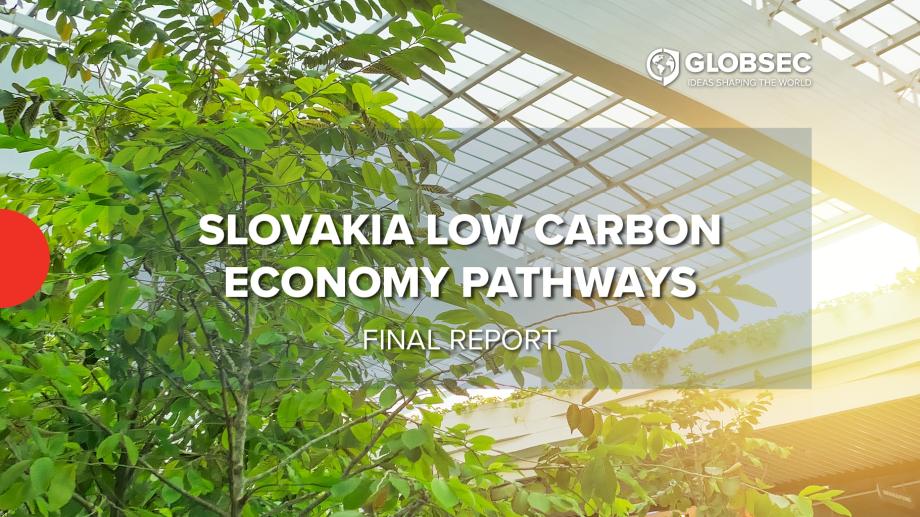Commentary
Slovakia Low Carbon Economy Pathways: Achieving More by 2030

This report assesses Slovakia’s current position, plans and potential for decarbonization over the next decade in
order to better define the optimal 2030 low carbon growth path and inform national policies and recovery priorities under negotiation. The findings will form the basis for targeted public-private discussions on the implementation of European Green Deal measures in 2021.
KEY FINDINGS
- Social and political consensus must be built around strategic projects that utilize the EU budget to deliver
sustainable and resilient growth, especially underpinning investments in building renovations, green
infrastructure and modernizing industrial practices. - It is imperative for Slovakia to establish a holistic approach with a singular well-defined low carbon growth pathway taking into consideration the impacts on production and employment in key sectors as part of just transition.
- As a small, open, industrial-based economy Slovakia will need to adopt concrete policy measures to manage inevitable reallocation of labour by reskilling/upskilling and attracting workers to high-quality green jobs.
- While the European Green Deal requires scaled-up investments much of it can be associated with compulsory modernization of old inefficient systems and infrastructure.
- The role and nature of bioenergy in heating and transport for achieving RES and GHG reduction targets need to be clearly defined vis-à-vis a realistic assessment of natural gas and electrification.
- The most important policy focus on 2030 is energy savings through building renovations.
- For building renovations to deliver decarbonisation and value for money a single and comprehensive data registry must be established with digital standards adopted in the tendering process.
- Buildings not only produce desirable economic, climate and environmental outcomes but additional co-benefits not factored in (IEP) modelling.
- Full legislative implementation of the 2016 Clean Energy Package is essential to unlocking a decentralization wave aligned with building renovation to enable sector coupling.
- While the enabling framework needs to be put in place now, savings realized in industry and transport are only actualized after 2030.
- The planned closure of Novaky coal power plant in 2023 is roughly the GHG reduction equivalent of replacing diesel/petrol cars by 2030.
- Policymakers should adopt a target percentage of steel tonnage using low or zero-carbon methods.
- If the highest emitting companies reduce CO2 emissions by 10–15% Slovakia can achieve a 21% CO2 reduction by 2030.
Read the full report below to know more.